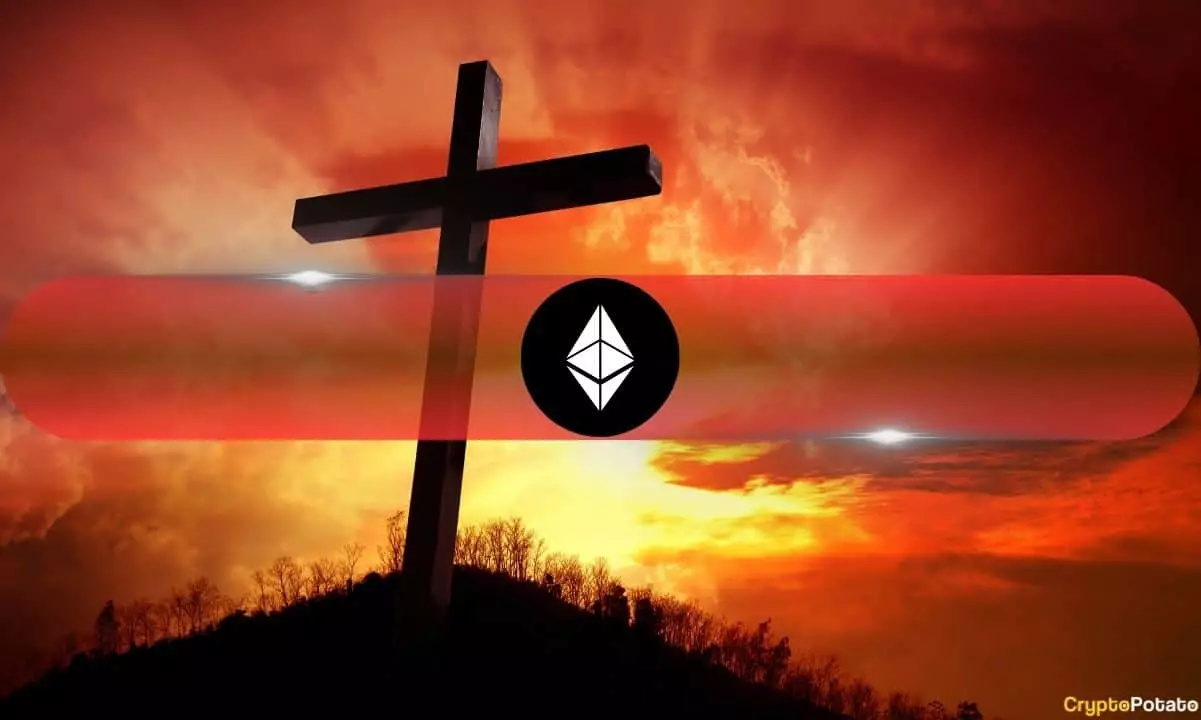The Ethereum market has recently experienced a shift, with rising exchange reserves indicating a potential new distribution phase. This can be seen through CryptoQuant’s Ethereum Exchange Reserve metric, which tracks the amount of ETH held in exchange wallets. An increase in this metric often suggests that traders are moving their ETH onto exchanges in preparation to sell, which can lead to an increase in supply pressure and contribute to a downtrend. The period between June and August saw a consistent upward trend in this metric, aligning with a significant bearish shift in Ethereum’s price during that time.
Adding to the complexity of the current situation is the emergence of the death cross pattern, where the 100-day moving average falls below the 200-day moving average. This pattern typically signals a long-term downtrend. Following the formation of the death cross, the Exchange Reserve metric has spiked once again, indicating a continued distribution phase as traders appear to be offloading their holdings. This rise in exchange reserves serves as a potential warning sign, suggesting that there is an increased availability of ETH for sale, which could further drive down prices if demand does not see a corresponding increase.
There are various factors affecting Ethereum’s performance in the market, beyond just the rising exchange reserves and the death cross pattern. While there was anticipation surrounding the launch of Spot Ethereum ETFs, with expectations of driving up the price of the crypto asset, they have seen significant outflows amounting to $477 million since their introduction earlier this year. Adrian Fritz, the research head at 21Shares, which launched a Spot Ethereum ETF, mentioned that the launch event turned out to be a ‘sell the news’ occurrence, dampening initial excitement. However, he remains optimistic that with more education and time, there will be a renewed interest in Ether.
Another significant challenge faced by Ethereum is the negative sentiment surrounding its rollup-centric roadmap. Brian Rudick, a researcher at the crypto trading firm GSR, suggests that one of the primary reasons for Ethereum’s underperformance is the skepticism surrounding its roadmap, especially after network fees experienced a significant drop. This has raised doubts about Ethereum’s positioning in the market, with some arguing that it is caught ‘in the middle’ between Bitcoin, considered the premier store of value, and Solana, deemed the top high-performance blockchain platform.
The Ethereum market is currently navigating through a challenging phase characterized by rising exchange reserves, the emergence of the death cross pattern, and shifting sentiments regarding its roadmap. It is crucial for traders and investors to closely monitor these developments and adapt their strategies accordingly to navigate the evolving landscape of the Ethereum market effectively.














